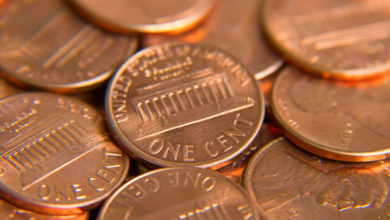
The typical family with children in grades K-12 plans to spend $630.36 on electronics, apparel and other school needs in its back-to-school shopping plans, down from $669.28 last year, according to a survey released July 15 by the National Retail Federation and conducted by Prosper Insights & Analytics. The poll of 6,500 consumers was conducted June 30-July 8. The consumer polls have a margin of error of plus or minus 1.2 percentage points.
There’s no question that back-to-school shopping can take a big bite out of your budget. If kids are young, you may feel you have little choice with the long lists of required items, but save where you can. It can pay to stock up on loss leaders — often crayons, paper or pens — and lay in a supply for the whole school year. Or, it may be smart to wait until seasonal items (dorm sheets and decor) go on sale.
Back-to-school shopping falls for college students
“Spending on ‘back to school’ has consistently fluctuated based on children’s needs each year, and it’s unlikely most families would need to restock and replenish apparel, electronics and supplies every year,” said NRF President and CEO Matthew Shay in a press release. “Parents this summer will inventory their children’s school supplies and decide what is needed and what can be reused, which just makes good budgeting sense for families with growing children.”
The picture was much the same for parents of college students. Spending was expected to drop to $899.18, down slightly from last year’s $916.48.
Nearly 20% of families hoped to begin their back-to-school shopping at least two months before the start of school, reflecting both a desire to comparison-shop to find the best deals and to spread out the expenses.
How to Pay for Supplies This Year
If you need to buy now, using your credit cards wisely could help you later. If you have a rewards credit card, that might be a smart way to pay for school supplies. Buying what you would have bought anyway and paying the full balance on time is the best way to earn points or rewards without losing out to interest charges.
Back-to-school shopping time can also be a good time to shop for a new card (or to review those you already have to make sure you maximize rewards). Discover it, for example, offers 5% back on purchases at home improvement stores, department stores and Amazon through September. The card also offers 12 months of interest-free financing. (It requires good to excellent credit; if you are not sure where you stand, you can get your free credit report summary, updated every 30 days, from Credit.com. You can also use that knowledge to help you find a credit card that is geared toward your credit standing.)
If you do not typically pay balances off in full and you have a card that is still in an introductory interest-free period, that could be a good choice, but be sure you know when that period ends and have a solid plan for getting the balance paid off. You can use this credit card payoff calculator to come up with that plan.
Another option, when you know you have a fairly big expense coming such as back-to-school shopping, is to use that planned splurge to make sure you have the qualifying minimum spend for a credit card sign-up bonus. For example, the Chase Sapphire Preferred card currently offers 40,000 bonus miles if you spend $4,000 in three months. That card also requires good credit.
If your credit hasn’t yet reached the point where issuers are willing to offer perks to get you to apply, you can still use back-to-school time to build your credit. If you use credit cards for back-to-school shopping, try to keep balances low and to be sure that you pay on time — those two factors are the biggest contributors to your credit standing.
Note: It’s important to remember that interest rates, fees and terms for credit cards, loans and other financial products frequently change. As a result, rates, fees and terms for credit cards, loans and other financial products cited in these articles may have changed since the date of publication. Please be sure to verify current rates, fees and terms with credit card issuers, banks or other financial institutions directly.
Related Articles
- Why Your Credit Card Balance Affects Your Credit Score
- The Best Credit Cards in America
- Chase Slate Review: A Good Bet for Balance Transfers
This article originally appeared on Credit.com.
This article by Gerri Detweiler was distributed by the Personal Finance Syndication Network.


I have already bought my kids’ school supplies amounting to $470 a month ago. And, the credit bill just arrived a few days ago. Yesterday, I paid it off using Digit.
Buying early is a smart idea. Not only is it paid off, but it’s one less thing to worry about as school is set to begin. Congrats!